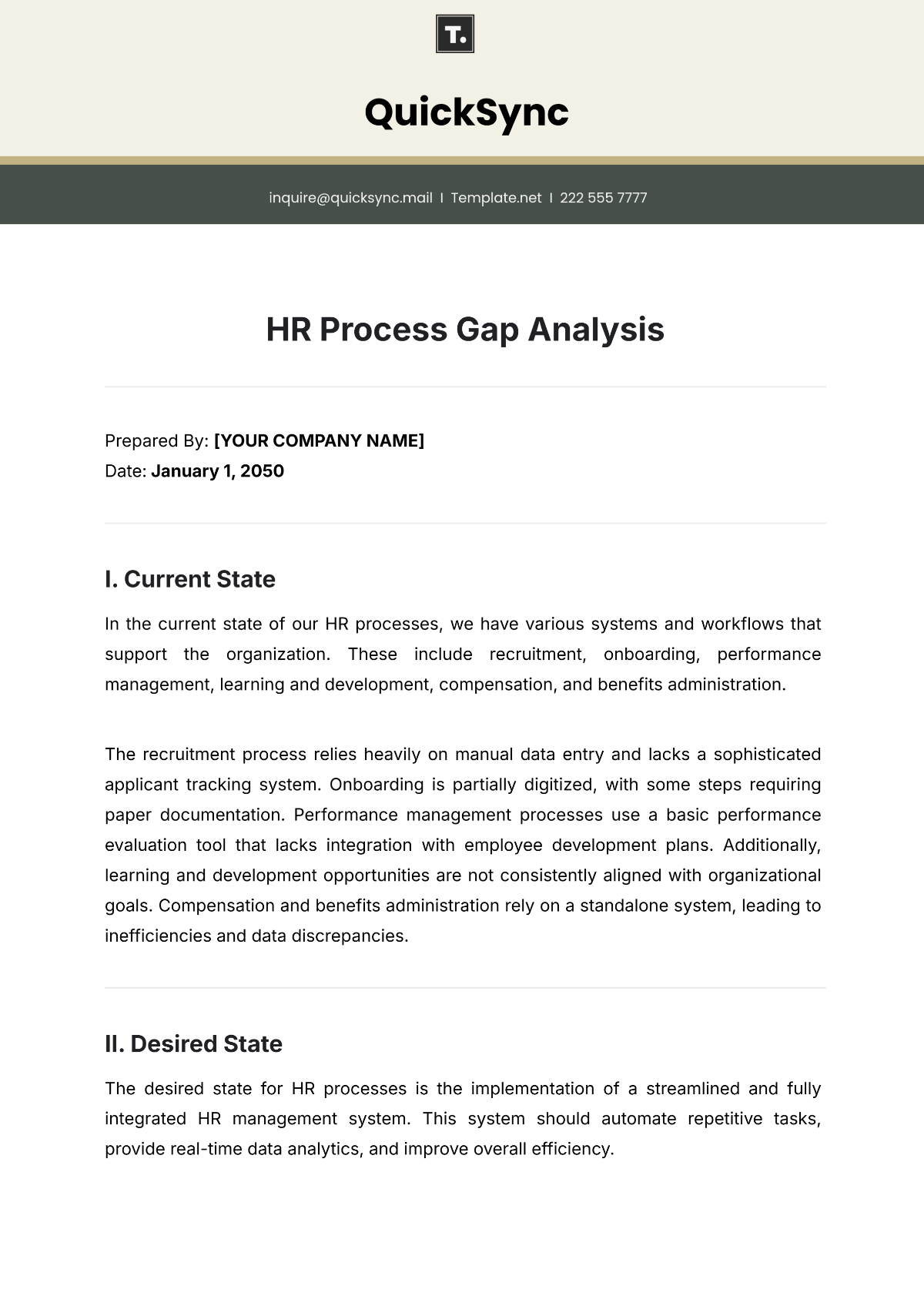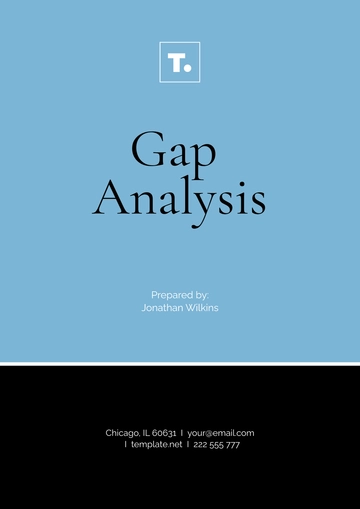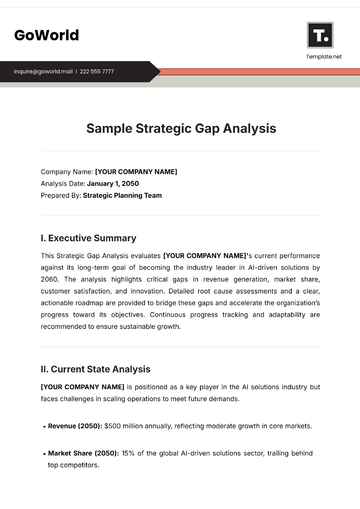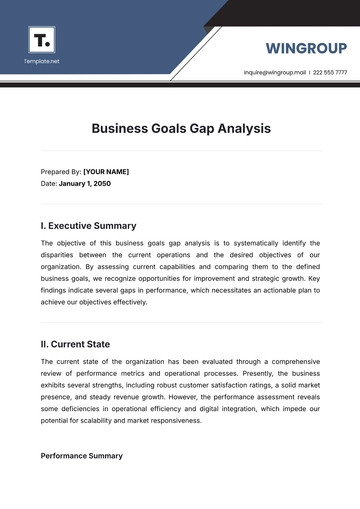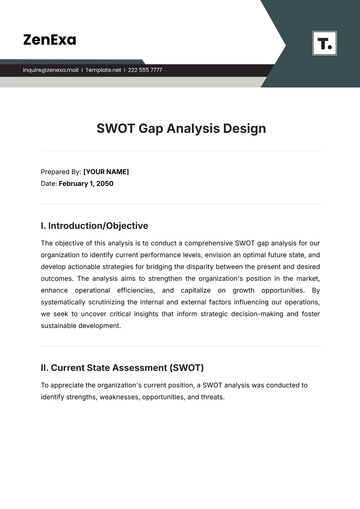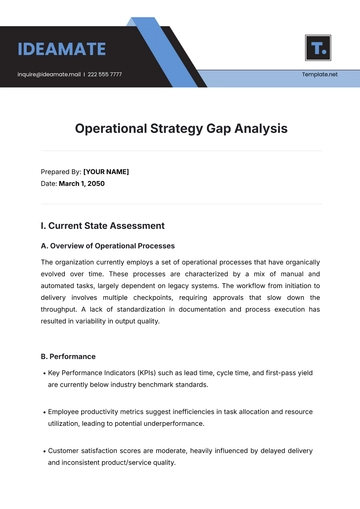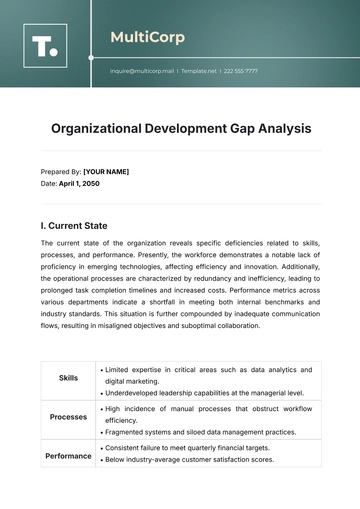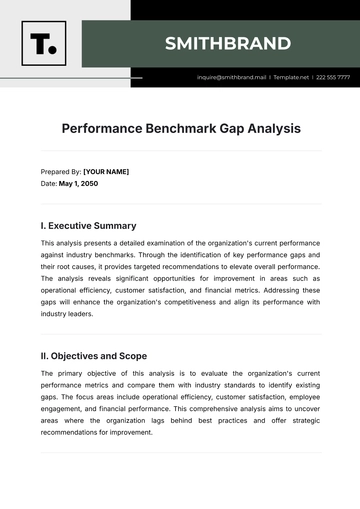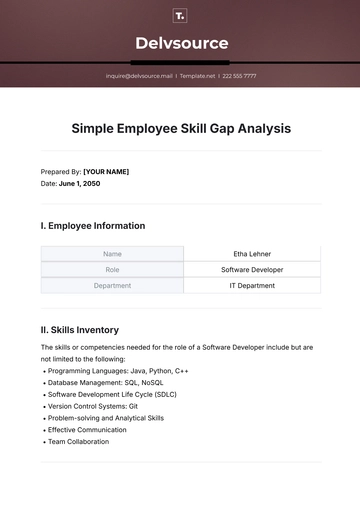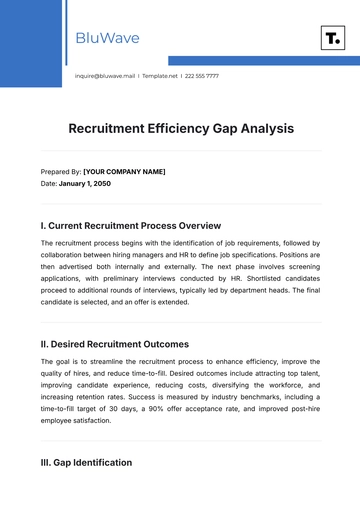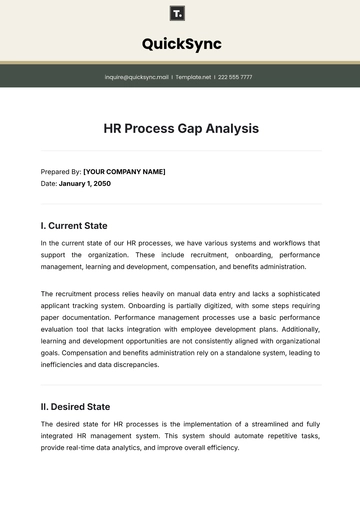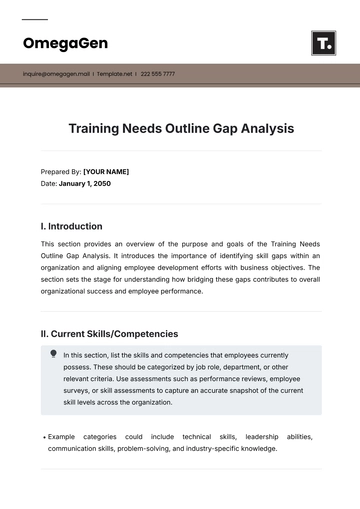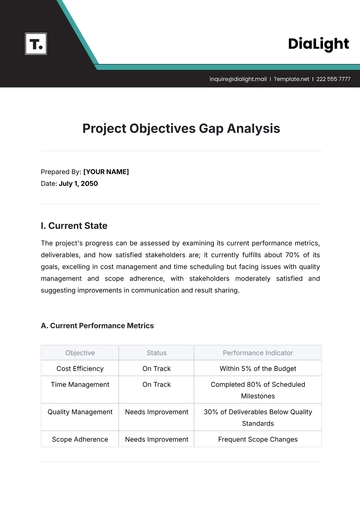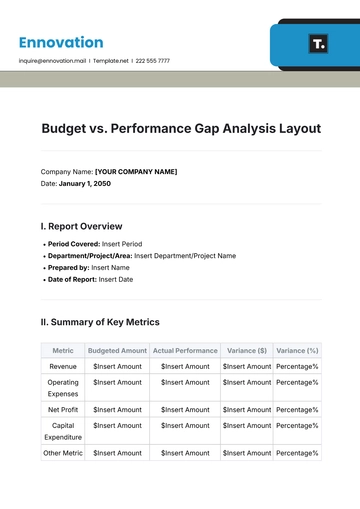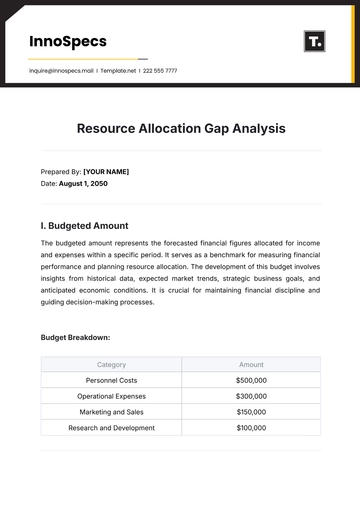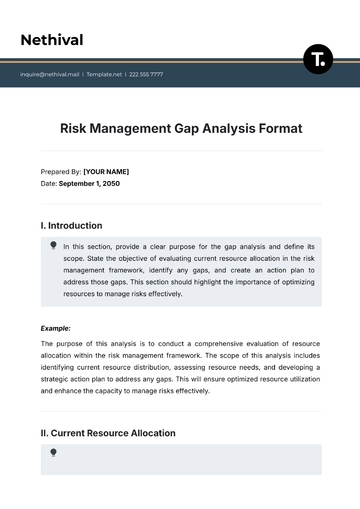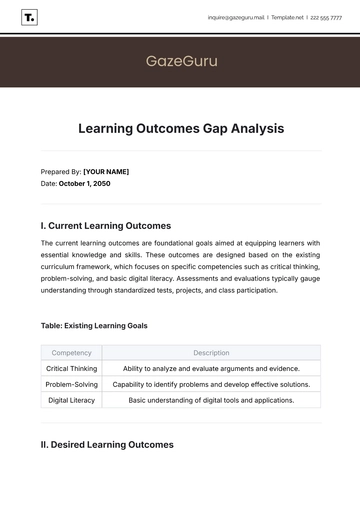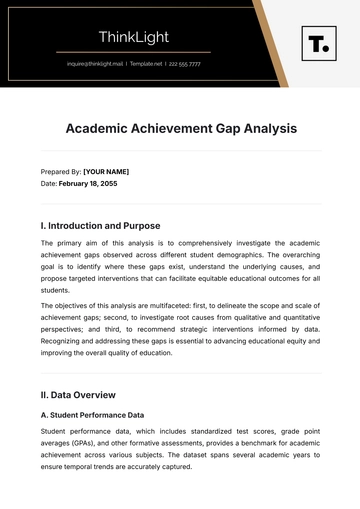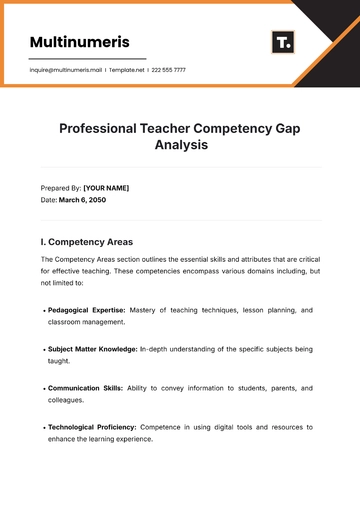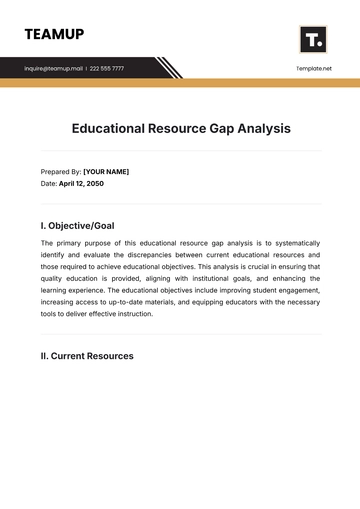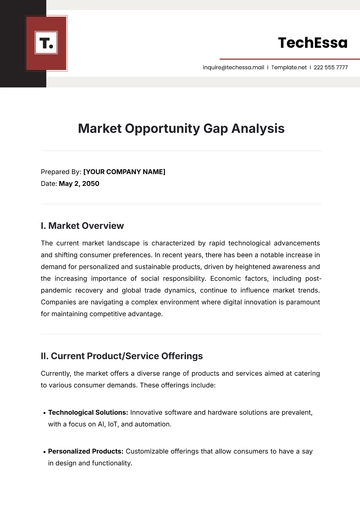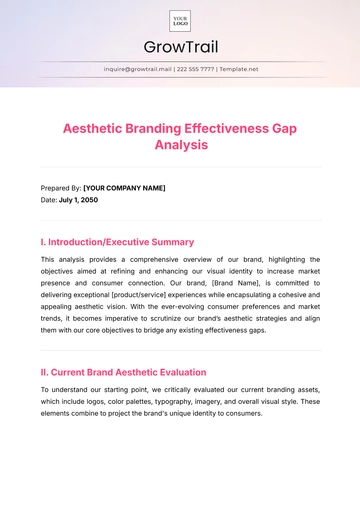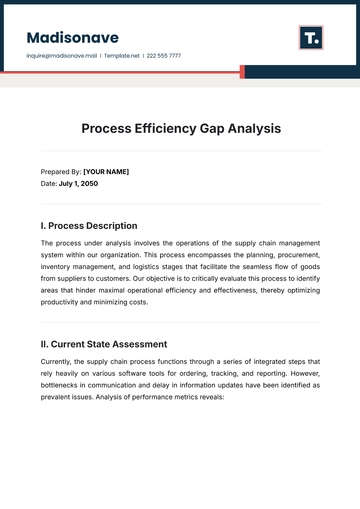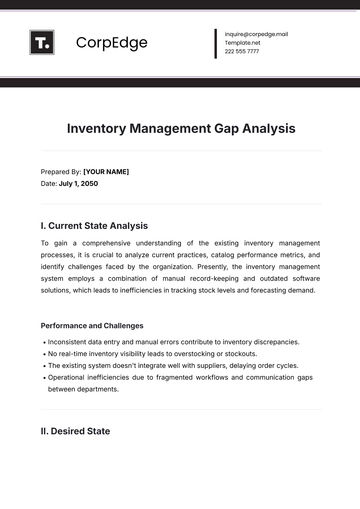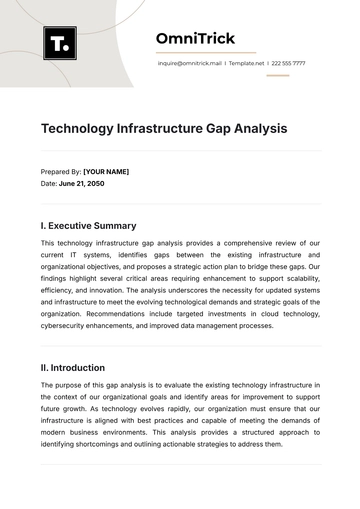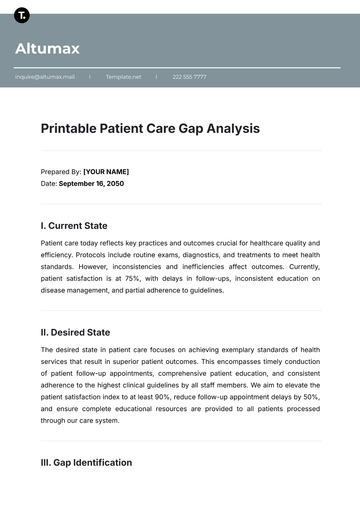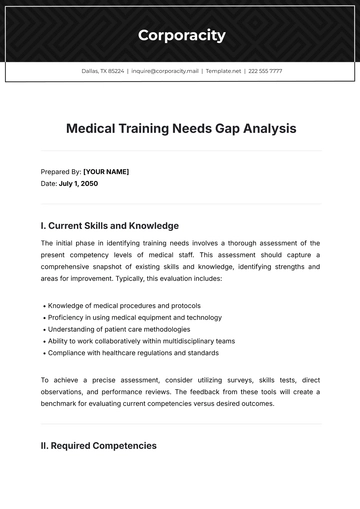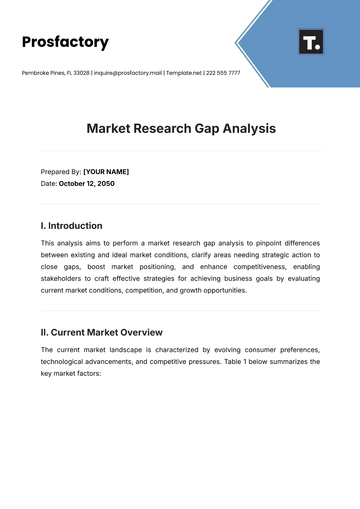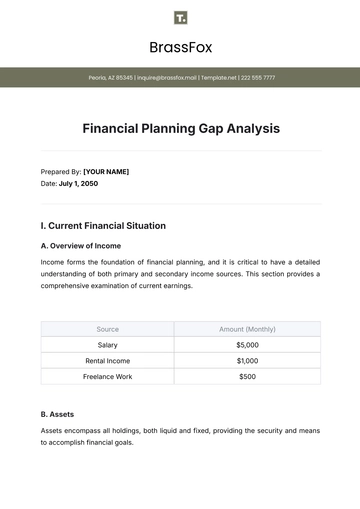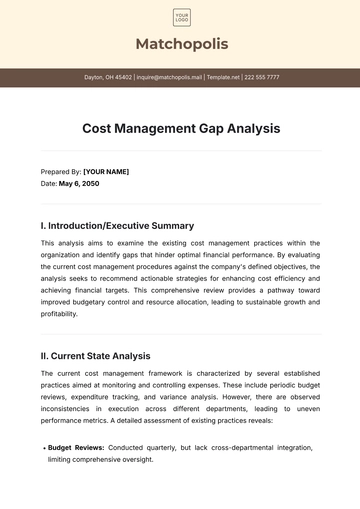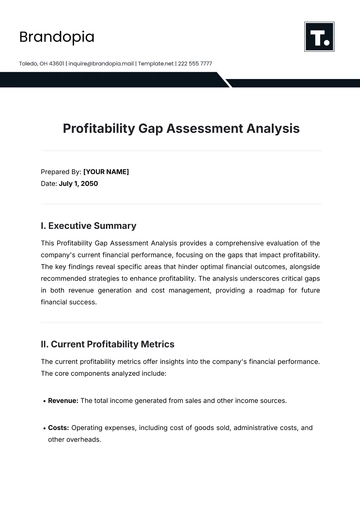HR Process Gap Analysis
Prepared By: [YOUR COMPANY NAME]
Date: January 1, 2050
I. Current State
In the current state of our HR processes, we have various systems and workflows that support the organization. These include recruitment, onboarding, performance management, learning and development, compensation, and benefits administration.
The recruitment process relies heavily on manual data entry and lacks a sophisticated applicant tracking system. Onboarding is partially digitized, with some steps requiring paper documentation. Performance management processes use a basic performance evaluation tool that lacks integration with employee development plans. Additionally, learning and development opportunities are not consistently aligned with organizational goals. Compensation and benefits administration rely on a standalone system, leading to inefficiencies and data discrepancies.
II. Desired State
The desired state for HR processes is the implementation of a streamlined and fully integrated HR management system. This system should automate repetitive tasks, provide real-time data analytics, and improve overall efficiency.
III. Gap Identification
By analyzing each process, we identify key gaps between the current and desired state:
Process | Current State | Desired State | Gap |
|---|
Recruitment | Manual processes, basic tracking | Automated, integrated tracking | Lack of automation and integration |
Onboarding | Partially digital | Fully digital, streamlined | Partial digitization |
Performance Management | Basic tool, stand-alone | An integrated system, continuous feedback | Lack of integration and feedback |
Learning and Development | Ad-hoc, limited alignment | Strategic alignment with goals | Lack of strategic alignment |
Compensation and Benefits | Standalone systems | Unified platform | System fragmentation |
IV. Action Plan
To address the identified gaps, we recommend the following actions:
Implement a full-scale applicant tracking system to enhance recruitment automation and candidate management.
Transition to a fully digital onboarding process, using electronic forms and workflows to ensure efficiency.
Adopt an integrated performance management system offering continuous feedback and connection to development plans.
Establish an organizational learning and development strategy that aligns training offerings with strategic business objectives.
Select and implement a unified system for compensation and benefits to ensure consistency and streamline data management.
V. Timeline
The proposed timeline for implementation is as follows:
Task | Timeline |
|---|
Recruitment System | Implement within 6 months |
Onboarding Process | Complete transition within 3 months |
Performance Management System | Implement within 9 months |
Learning and Development Strategy | Develop and begin rollout within 12 months |
Compensation and Benefits Platform | Deploy within 6 months |
VI. Responsibility
The designated roles responsible for each action item include:
Task | Responsible Role |
|---|
Recruitment System | HR Technology Manager |
Onboarding Process | HR Operations Lead |
Performance Management System | Learning and Development Manager |
Learning and Development Strategy | Chief Learning Officer |
Compensation and Benefits Platform | Compensation and Benefits Director |
VII. Measurement Metrics
The following metrics will measure the success of the implemented actions:
Analysis Templates @ Template.net
